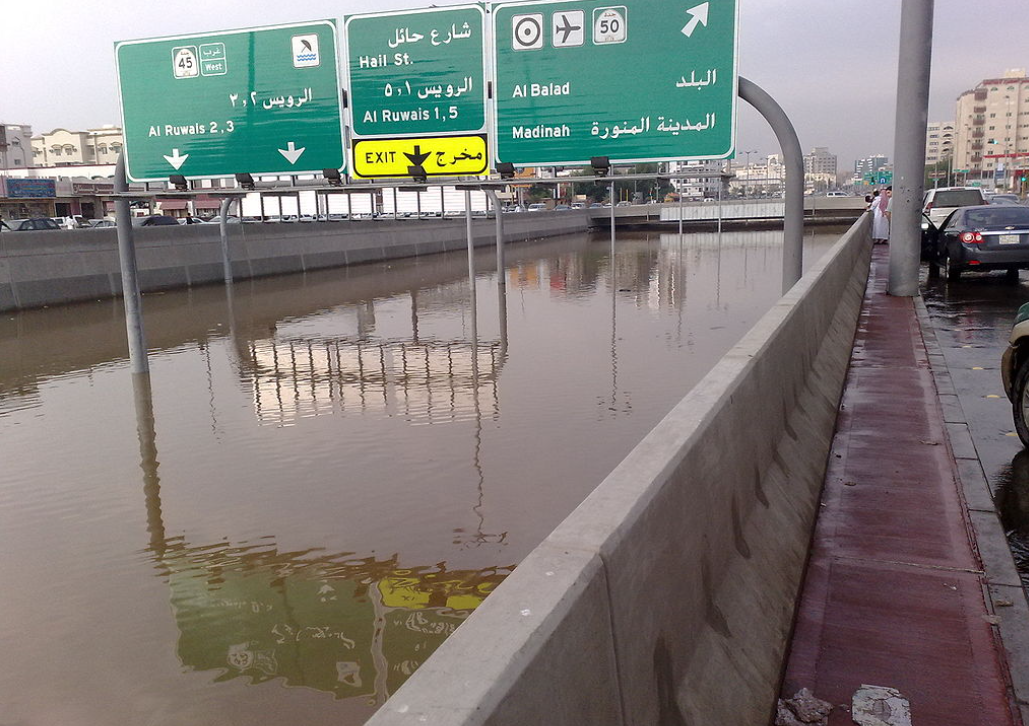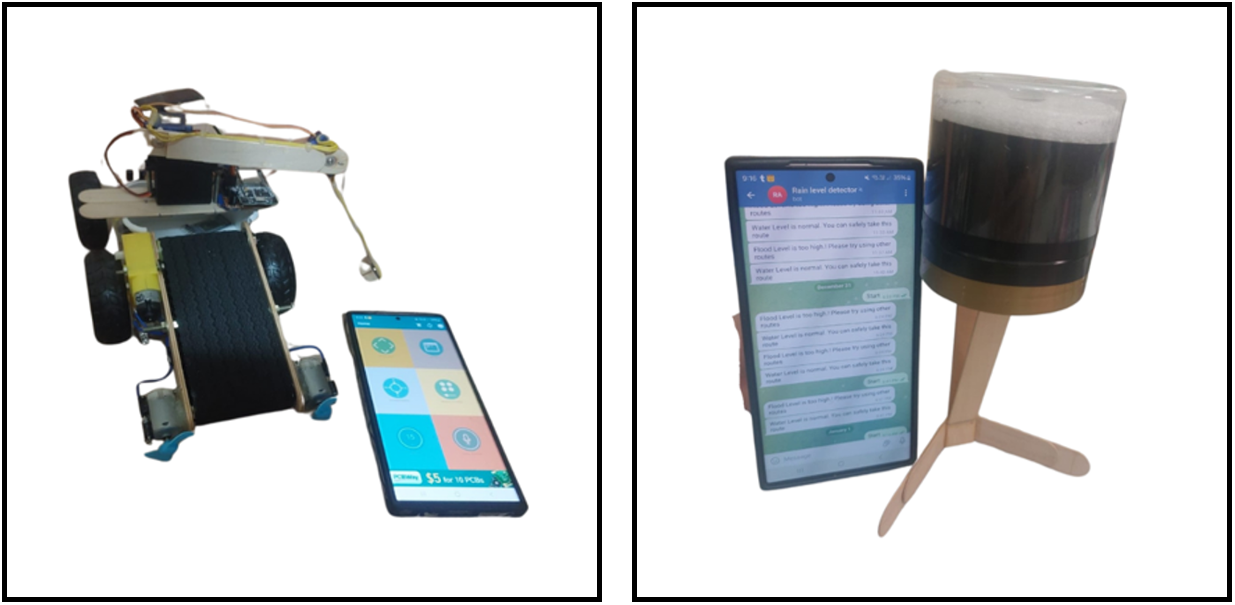Stars and STEM Stories
GLOBE Qatar: GLOBE Primary School Educators Find Smart Solution for Urban Flooding
Severe rainstorms swamped the Arabian Gulf countries, including UAE, Bahrain, Qatar, Saudi Arabia, and Oman, in April 2024. These rains caused flash flooding across the region, severely disrupting infrastructure, transportation, and daily life. Several states recorded nearly a year's worth of rain in a single day!

Flooding in the Middle East
To tackle this, GLOBE educators Mariem AlMaraghy and Retaj Bashar from Moza Bint Mohammed primary school, developed Rain Rescue, an Internet of Things (IoT)* and solar-powered system that monitors water levels, clears blocked drains, and alerts drivers of flood risks, thus enhancing urban resilience. The system works using an IoT sensor device and an intelligent drainage robot. The sensor device uses ultrasonic sensors and a mobile chat app to provide real-time flood alerts and safe route guidance, while the drainage robot clears debris from drains with a robotic arm and live-streaming camera, operating sustainably on solar power.

Impact and Sustainability
Rain Rescue minimizes flood damage, infrastructure costs, and public safety risks while aligning with Qatar’s Vision 2030 and the United Nations’ Sustainability Develop Goals 9, 11, and 13.
Enhancing Rain Rescue with the GLOBE Precipitation Protocol
Integrating the GLOBE Precipitation protocol improved Rain Rescue’s accuracy in flood prediction and mitigation through the following features:
- Calibrated IoT sensors standardized rain measurement techniques, which ensured precise flood alerts.
- Optimized infrastructure planning used historical rainfall data to identify high-risk flood zones, improving sensor and robot placement.
- Engaging with the community brought about collaboration with local schools, expanding data collection and enhancing accuracy.
As an example of how integrating with GLOBE’s Precipitation protocol has enhanced the Rain Rescue system, annual rainfall in Doha (Qatar’s capital city) averages 75 mm, with peak rainfall in February (17.1 mm). This real data refined the system’s predictive accuracy, ensuring adaptive flood response.
Technical Implementation and Innovation
Rain Rescue integrates ESP8266 microcontrollers, ultrasonic sensors, and AI-driven robotics to monitor water levels, analyze real-time data, and automate drainage cleaning. Powered by solar panels, the system ensures sustainable and efficient flood management.
Unlike traditional drainage systems, Rain Rescue actively responds to blockages using IoT and robotics, providing real-time insights for urban planners and emergency responders. The project’s patented technology (Patent No. 202535218919706) ensures global recognition and scalability.
By combining advanced technology with scientific methodology, Rain Rescue sets a new standard for flood management in smart cities.
*IoT sensors are devices that collect data from the physical world and transmit it wirelessly.
Learn more about GLOBE Qatar.
Story and images the Rain Rescue system courtesy of Sherif Elhefnawi, senior science standards specialist, Qatar Department of Educational Supervision.
Image of flooding courtesy of Rami Awad, CC BY-SA 3.0, via Wikimedia Commons





